 The London Interbank Offered Rate, or LIBOR, has been used for decades as the benchmark interest rate for many bank loans, including commercial and small business loans. But regulators have set a goal of replacing LIBOR with an alternative benchmark by 2022.
The London Interbank Offered Rate, or LIBOR, has been used for decades as the benchmark interest rate for many bank loans, including commercial and small business loans. But regulators have set a goal of replacing LIBOR with an alternative benchmark by 2022.
The problems with LIBOR go back to the 2008-2009 financial crisis when there was collusion among traders in setting LIBOR each day. Billions of dollars in fines were assessed against the guilty parties, and an effort was launched to replace LIBOR with a benchmark that is based on actual transactions.
One benchmark that’s being seriously considered as a LIBOR replacement is the Secured Overnight Financing Rate, or SOFR. This benchmark measures the day-to-day cost of borrowing money when U.S. Treasuries are pledged as security.
SOFR rates are based on transactions processed through Fixed Income Clearing Corp., which makes them less vulnerable to manipulation. They are weighted by the actual amounts of money that are borrowed.
According to the Federal Reserve Bank of New York, SOFR rates can be up to 75 basis points lower than LIBOR. If SOFR is eventually selected to replace LIBOR, loan pricing would need to be adjusted to reflect this lower rate.
Though the replacement of LIBOR is still nearly three years away, now is the time to begin preparing for this change. Start by looking at all of your loan documents, including notes and loan agreements, to see which ones include LIBOR-based pricing. Then amend these documents to include LIBOR replacement language.
You should also educate your frontline employees about this issue, which will likely garner more attention over the next couple of years. Employees need to be prepared to answer customers’ questions when they arise.
Give us a call if you have any questions about LIBOR replacement.

